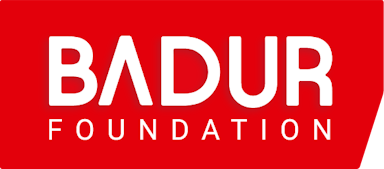Saffron Robe: Preserving a sacred path to change the destiny of a new generation
23/09/2025Saffron Robe is a feature documentary that follows a revered Buddhist abbot in the remote northern region of Laos as he navigates the challenges of a sacred life under a communist regime.
Three-quarters of Maltese people view climate adaptation as a national priority, survey shows
18/02/2025The European Investment Bank (EIB) released its seventh annual Climate Survey, which presents the views of over 24,000 respondents from across the European Union and the United States on the topic of climate change.
The real Byker Grove: Inside the youth clubs that inspired Ant and Dec's childhood TV classic
10/10/2024From deep poverty to school exclusions and gang violence, kids in Byker face big obstacles. What would a realistic Byker Grove show us today?
Életre kelnek a legófigurák a nógrádi tanodák robotika foglalkozásain
10/10/2024Különleges foglalkozás várja hétről-hétre vármegyénk három településén a diákokat. A robotika szakkörön a programozás alapjaiba kóstolhatnak bele a hátrányos helyzetű diákok. Vannak közöttük, akik korábban nem is láttak legót, most abból építik a laptop által vezérelt alkotásokat.
South Tyneside relationship abuse charity secures funding to run a volunteer project
23/09/2024South Tyneside-based SURT (Stopping Unsafe Relationships Together) has announced that it has been successful in securing funding for the next two years to implement its ‘Volunteer Project’.
Ifjúsági házként éledhet újjá a szécsényi Flört
04/07/2024Az Egyesek Ifjúsági Egyesület ifjúsági házat hoz létre Szécsény központjában. A ház jelenleg felújítás alatt áll, azonban a közösségi teret és annak a programjait a fiatalok saját igényeik szerint alakíthatják majd a jövőben. Az ifjúsági ház várhatóan ősszel nyílik majd meg.
Local nostalgia: a potential community asset
12/03/2024If the right economic support is put in place, collective memory can be used to reinvent a better future for hard-pressed areas.
The Oswin Project: HMP Northumberland's ground to fork scheme
31/01/2024A ground to fork scheme designed to cut reoffending is equipping prisoners in Northumberland with new skills and has already helped to 'save lives'.
Cégek és a cigányság: az Uccu utat mutatna, az iskolákban már nagy a sikerük
07/12/2023A nyitott, fiatal korosztálynál van a romák és nem romák által is sikereknek megélt közös eredmények kulcsa. Az Edison100 idei Forbes-különdíjasa, az Uccu Alapítvány évente 70 interaktív workshopot tart az iskolákban, programjukat az üzleti világban is értékesítenék.
New endemic Sea Lavender found in Malta
23/11/2023This flowering plant is unique to Malta and is considered an endangered species.
Community Blend coffee launch
23/10/2023Company of Cooks launched a Community Blend coffee as a collaboration between Union hand-roasted coffee and social enterprise Well Grounded.
Funder Commitment on Climate Change: Year 3 Report
19/07/2023The Funder Commitment on Climate Change (FCCC) is a framework to help foundations consider the ways they can use their resources to rise to the challenges of the climate crisis.
Stronger Together event empowers school girls in North Tyneside
26/05/2023A pioneering event aimed at empowering and educating young women took place in North Tyneside, thanks to Foundation Futures.
How the pandemic hit the North the hardest
06/04/2023A new book - ‘Northern Exposure: Covid- 19 and Regional Inequalities in Health and Wealth’ - details how people in the North suffered significant inequalities during the pandemic.
Azért dolgozunk, hogy az ő gyerekeik már ne állami gondozottként nőjenek fel
22/12/2022A gyermekotthonok nem képesek felkészíteni az állami gondozásban nevelkedő fiatalokat az önálló élettel járó kihívásokra, így a szülőségre sem.
